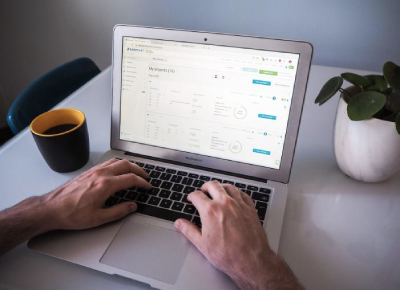If you’re running SEO campaigns in 2025, one of the most powerful features of SEMrush is its Position Tracking Tool. While SEMrush is often known for keyword research and competitor analysis, its tracking feature is what helps you measure whether your efforts are paying off.
The SEMrush Position Tracking Tool lets you:
- Monitor daily keyword rankings across desktop, mobile, and local search.
- Track competitor positions in real time.
- Measure Google Maps (local pack) visibility.
- Identify SERP features (featured snippets, People Also Ask, site links).
- Generate automated reports for clients or teams.
In this guide, we’ll break down how to set up and use SEMrush Position Tracking effectively, common mistakes to avoid, and why agencies and businesses rely on it.
What is SEMrush Position Tracking?
![]()
SEMrush Position Tracking is a rank monitoring feature that shows how your target keywords perform in search results over time. Unlike free keyword trackers, SEMrush updates daily and allows:
- Localized tracking by country, city, or ZIP code.
- Competitor keyword benchmarking.
- SERP feature tracking (e.g., snippets, maps, FAQs).
If you’re starting, you may also want to explore these Free Keyword Rank Trackers before investing in SEMrush.
How to Set Up SEMrush Position Tracking
Step 1: Create a Project
- Go to Projects → Add New Project.
- Enter your website domain and project name.
Step 2: Choose Keywords to Track
- Import keywords from Google Analytics, SEMrush Keyword Manager, or manually enter them.
- Group them into categories (branded, local, informational, transactional).
Step 3: Select Target Location & Device
- Choose a country, state, city, or ZIP code for local SEO.
- Select desktop or mobile (you can track both separately).
Step 4: Add Competitors
- SEMrush suggests competitors automatically, or you can add them manually.
- This allows side-by-side rank tracking comparisons.
Step 5: Run Position Tracking
- SEMrush updates daily with changes in rankings, SERP features, and competitor movements.
Want to compare SEMrush with other tools? See our complete guide on the Best SEO Rank Tracking Tools in 2025.
Key Features of SEMrush Position Tracking
1. Local SEO Tracking
- Monitor how your business ranks in Google Maps and local pack results.
- Perfect for businesses targeting specific cities or neighborhoods.
2. Competitor Rank Tracking
- Compare your keyword performance against multiple competitors.
- See who is outranking you and for which terms.
3. Device-Based Tracking
- Track rankings separately for desktop and mobile users.
- Useful for industries with strong mobile traffic.
4. SERP Feature Monitoring
- Find out if you’ve won featured snippets, People Also Ask boxes, or site links.
5. Automated Reporting
- Create white-label reports for clients.
- Schedule weekly or monthly performance updates.
For businesses focused on maps and hyperlocal results, combine SEMrush with a Local SEO Rank Tracker.
Why SEMrush Position Tracking Beats Free Tools
| Feature | SEMrush Position Tracking | Free Tools (GSC, SERPRobot, Wincher Free) |
| Daily updates | Yes | No (weekly or manual checks) |
| Local/ZIP tracking | Yes | No |
| Competitor monitoring | Yes | No |
| SERP feature tracking | Yes | Limited |
| White-label reports | Yes | No |
Free tools are fine for quick checks, but SEMrush gives precision, depth, and reporting needed for professional SEO.
Common Mistakes to Avoid
- Tracking too many keywords at once → Start with core keywords and expand gradually.
- Ignoring competitor data → Tracking only your site misses growth opportunities.
- Not segmenting by location/device → You might rank high on desktop but poorly on mobile.
- Skipping reports → Clients and teams need clear ranking updates.
FAQs
Q1. Is SEMrush Position Tracking free?
No. It’s part of SEMrush’s paid plans, but worth the investment for daily and local tracking.
Q2. Can I use SEMrush to track Google Maps rankings?
Yes, SEMrush allows geo-based and local pack tracking.
Q3. How often does SEMrush update keyword rankings?
Daily by default, with some near-real-time updates for enterprise users.
Q4. Can I track competitors with SEMrush Position Tracking?
Yes. You can add up to 20 competitors and compare rankings side by side.
Q5. What’s the difference between SEMrush Position Tracking and Keyword Overview?
Keyword Overview shows search volume and difficulty, while Position Tracking monitors your site’s live performance for chosen keywords.
Final Thoughts
The SEMrush Position Tracking Tool is more than just a rank checker—it’s a strategic SEO dashboard that shows whether your campaigns are working.
If you’re serious about SEO in 2025, this tool is essential for:
- Local businesses want better Google Maps visibility.
- Agencies providing white-label reporting to clients.
- Companies need competitor intelligence at scale.
Want expert help in setting up SEMrush tracking and reports? Contact Reliqus and let our team optimize your SEO workflow.

